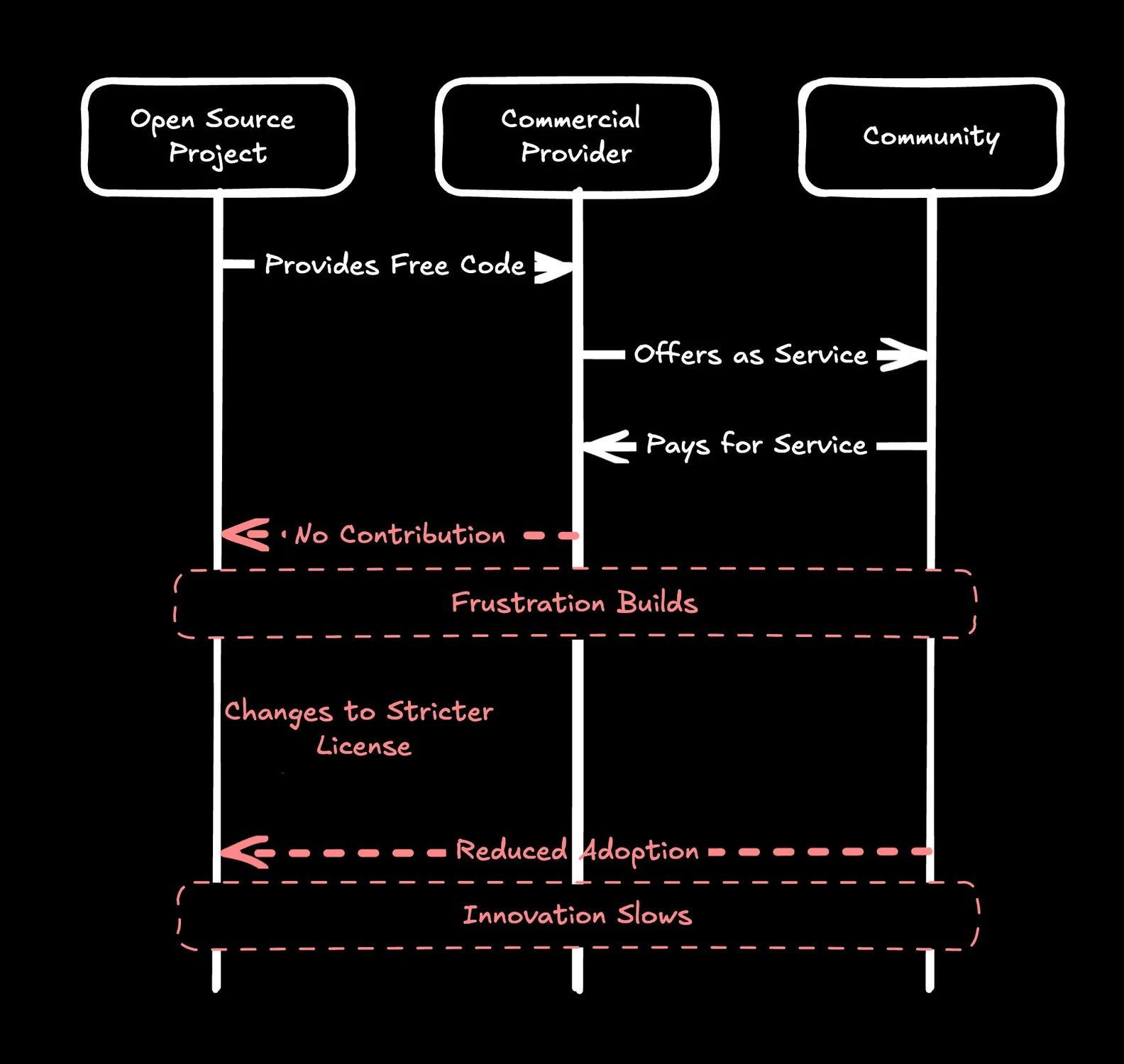7 Challenges of Open Source Billing

With open source billing software promising full control and zero licensing cost, it is easy to see why finance and product leaders are exploring open source invoicing and open source subscription billing as their core revenue engine.
But adoption tells only half the story. The latest State of Open Source data shows that while usage continues to rise, more than 75% of enterprises using open source software cited lack of expertise as one of their biggest challenges.
This is why choosing open source billing without understanding its true costs can become a silent growth killer.
In this blog, we will break down the real challenges teams face when they adopt open source billing, when the model actually works well, and where platforms like Zenskar offer a more scalable path forward.
Challenges of open source billing
1. Support and maintenance nightmares
Open source billing software gives you control, but it does not give you support. Most projects rely on forum threads, scattered documentation, and contributors working voluntarily in their spare time. That is workable for side projects, but risky for a billing management system that touches invoices, revenue, cash flow, and audits.
When something breaks, there is no vendor SLA to fall back on. The question becomes simple: who owns the fix? Your engineers, or someone on GitHub responding when they have time?
This creates a real operational cost. Debugging subscription issues, patching tax logic, fixing payment failures, or aligning your open source invoicing system with product updates almost always lands on internal engineering. Over time, this turns billing into a background drain on bandwidth that should have gone toward the product.
2. Complex integrations and customization burden
Open source means flexibility, but it also means assembling the parts yourself. Most open source billing tools offer the basics, but anything beyond that becomes DIY work: integrating payment gateways, syncing usage data, building tax logic, adding multi-currency support, or connecting with your CRM and data warehouse.
Do you need any of these as part of your billing software?
- New payment methods
- Custom billing schedules
- Usage-based pricing
- Hybrid pricing models
- Contract level invoicing
- Metering integrations
If yes, you will likely end up coding and maintaining those pieces yourself.
For a startup with strong engineering DNA, that might be feasible. For a scaling SaaS company, it becomes a slow, expensive way to support revenue operations.
3. Security and compliance risks are often overlooked
Open source billing systems provide transparency, but transparency without dedicated security ownership becomes exposure. You are responsible for applying patches, monitoring vulnerabilities, managing access controls, and aligning billing workflows with standards like SOC 2, PCI, GDPR, and local tax rules.
The risk is not theoretical. In the State of Open Source Report, teams running outdated or end-of-life open source tools were three times more likely to fail compliance audits. That failure rate jumps from 14 percent to 41 percent when unsupported software is involved.
This challenge extends directly into billing-driven compliance, such as ASC 606, where open source tools rarely offer structured workflows for revenue recognition. Financial systems require controlled workflows, audit trails, predictable updates, and timely security patching. For companies without senior engineers dedicated to security and compliance, this becomes one of the biggest hidden costs of adopting open source billing software.
4. Scalability as you grow: the upgrade dilemma
Open source billing can work smoothly when customer volume is low and pricing is simple. The challenge appears when you scale.
As subscription counts grow and usage-based pricing becomes more complex, billing stops being a background task and turns into a data-intensive engine.
You start dealing with:
- Millions of metering events: Tracking every tiny usage action at a massive scale
- Complex entitlement logic: Deciding who is allowed to access what, under which conditions
- Multi-entity invoicing: Generating bills across multiple business units or subsidiaries
- Pricing exceptions: Handling special discounts or custom rates for specific customers
- Grandfathering rules: Keeping old customers on older plans or benefits
- Proration: Charging only for the portion of a billing period actually used
- High volume invoice generation: Creating thousands of invoices quickly and accurately
Most open source billing tools also hit practical breakpoints that teams don’t anticipate early on. The cost of upgrades and maintenance quietly compounds. Some examples include:
- Generating more than 3,000–5,000 invoices/month
- Handling multi-subsidiary ledgers
- Supporting different tax jurisdictions
- Applying complex pricing rules
Scaling revenue should not require re-architecting your billing engine every year.
5. Lack of accountability: who owns the roadmap?
With open source billing, you do not own the roadmap. You depend on unpaid contributors and voluntary releases. If you need a critical billing workflow, a new invoicing feature, or a compliance update, the timeline is not yours.
A practical question emerges: When customers request a new invoicing workflow, how do you determine turnaround time? If the answer depends on the availability of a community maintainer, you lose strategic control over your revenue stack.
This is where managed platforms like Zenskar provide a real advantage. You get flexibility without surrendering roadmap ownership. Billing becomes something you configure, not something you wait for someone else to maintain.
Competitive advantage depends on how quickly you can change pricing, launch new plans, run experiments, and support enterprise contracts. Open source billing makes that speed unpredictable.

Source: https://www.builder.io/blog/oss-consequences
6. Fragmented user experience and UI inconsistencies
Open source projects tend to optimize for functionality first, design last. Billing is no exception. Interfaces are often dated, inconsistent, or overly technical, which creates friction for finance teams, sales teams, and support teams who rely on billing dashboards every day.
A fragmented UI leads to:
- More manual work
- Longer onboarding for employees
- Higher dependency on engineering for simple tasks
- A greater risk of invoicing or configuration errors
This slows down revenue operations. When teams cannot easily update pricing, adjust contracts, review usage, or generate reports, billing stops being an operational system and starts becoming a bottleneck.
Modern SaaS teams expect billing tools that feel as intuitive as their CRM or analytics platform. Open source billing rarely meets that expectation without heavy design and UX investment, which adds yet another layer of hidden long-term cost.
7. Revenue recognition and audit complexity
Billing directly drives revenue recognition, yet most open source billing systems stop at invoice generation. SaaS finance teams must meet ASC 606 requirements, which include:
- automated SSP allocation
- multi-element arrangement handling
- deferred revenue schedules
- contract modification logic
- audit trails for every contract event
- GL mappings tied to accounting policies
Open source billing rarely supports these out of the box, leading to inconsistencies, audit pushback, and delays in month-end close.
From a CFO’s perspective, this introduces financial risk like revenue leakage from mispricing, reconciliation burdens, and unpredictable close cycles caused by manual handoffs between Finance and Engineering.
When open source billing makes sense (and when it absolutely does not)
When open source billing is the right fit
Open source billing software can be a strong choice, but only for companies with the right stage, culture and engineering capacity. It works best when you want complete control of your billing logic and you have the resources to own the system end-to-end.
It makes sense when:
- You are an ultra-lean startup trying to minimize costs: If your pricing is simple, customer volume is low, and engineering bandwidth is available, open source invoicing and subscription billing can help you avoid hefty licensing fees.
- Your company is deeply engineering-driven: Some businesses view billing as infrastructure and prefer to customize everything while controlling data models internally.
- You need absolute control for compliance or unique business models: Industries with unusual pricing rules or custom entitlement logic sometimes prefer open source billing software because it lets them shape the system around their requirements, not the other way around.
When open source billing becomes a long-term regret
The problems begin when the business grows faster than the billing stack.
Open source billing starts breaking down when:
- You are scaling SaaS with thousands of customers.
- You adopt usage-based or hybrid pricing.
- You manage multi-entity or global finance.
- You iterate on pricing frequently.
At this point, billing is no longer a small engineering task. It is a specialized system that requires resilience, automation, and safeguards. The “free” system now demands full-time care.
This is where companies realize they have unintentionally built a second product inside their organization: a billing engine that needs architecture, maintenance, refactoring, and constant upgrades.
Open source vs proprietary billing systems: an outdated debate?
The conversation around open source billing versus proprietary billing software often gets framed as a strict either-or decision. On one side, you have full flexibility and control. On the other, you have reliability, support, and speed. But in practice, most scaling SaaS companies discover that the real question is how fast your billing can adapt to your business.
Revenue infrastructure today needs both adaptability and dependability. Pricing models evolve too quickly, and compliance requirements are too complex, for any billing system that is rigid, slow to update, or difficult to customize. This is why the binary debate fails to capture what fast-moving SaaS companies actually need.

How Zenskar closes the gaps that open-source billing leaves open
API-first and modular, so you can move fast without engineering bottlenecks
Open source billing gives you control, but only if you can afford to build and maintain every workflow yourself. Zenskar offers flexibility without the maintenance burden and can be integrated within hours. The platform is API-first and modular, enabling finance and product teams to configure pricing, plans, and invoicing logic without depending on developers.
Built in compliance, security, and global tax readiness
A major weakness in open source billing is the lack of structured governance. Billing must meet strict standards like SOC 2, PCI, GDPR, ASC 606-aligned revenue recognition, and multi-jurisdiction taxation. Zenskar provides this out of the box with global tax automation, audit trails, secure access controls, revenue recognition alignment, and multi-entity support. Compliance is built into the engine, not left to manual patching.
Support you can rely on, not forum Q&A
Billing cannot rely on community threads. Zenskar provides high-touch support through Slack, Zoom, and email, with teams who understand complex SaaS contracts and usage models. You get continuity, expertise, and a roadmap you can trust.
Support for all pricing models without custom engineering
Zenskar natively supports usage-based billing, hybrid pricing, tiered and volume models, milestone billing, enterprise contracts, metered entitlements, parent-child hierarchy, and add-ons or commitments.
Real outcomes from teams that migrated
Companies replacing open source or in-house billing report 70% percent faster operational cycles, 90% less engineering work, 5-week faster billing cycles, and zero missed SLAs.
Book a demo or explore our product tour to see how Zenskar adapts to your billing model, scales with your growth, and reduces engineering effort without slowing innovation.
Product launch was 4 months behind: How 100ms got back on track

Frequently asked questions
A system where the source code is public and self-hosted. It offers flexibility, but your team must own maintenance, security, upgrades, and compliance.
Only with active patching, dependency updates, and dedicated engineering. Security and scalability challenges grow sharply with usage-based pricing, global tax rules, or multi-entity needs.
Limited support, heavy integration work, high maintenance load, compliance risks, and scalability issues, especially as pricing and customer volume grow.
It provides open-source level flexibility without the engineering burden. API first, no code configuration, built-in compliance, and native support for modern pricing remove the need to maintain your own billing stack.
When billing slows, pricing gets complex, engineering gets overloaded, compliance risks rise, or invoice volume increases. If maintaining billing is taking more time than building the product, it is time to move.














%20be%20truly%20invisible_.webp)



.webp)









